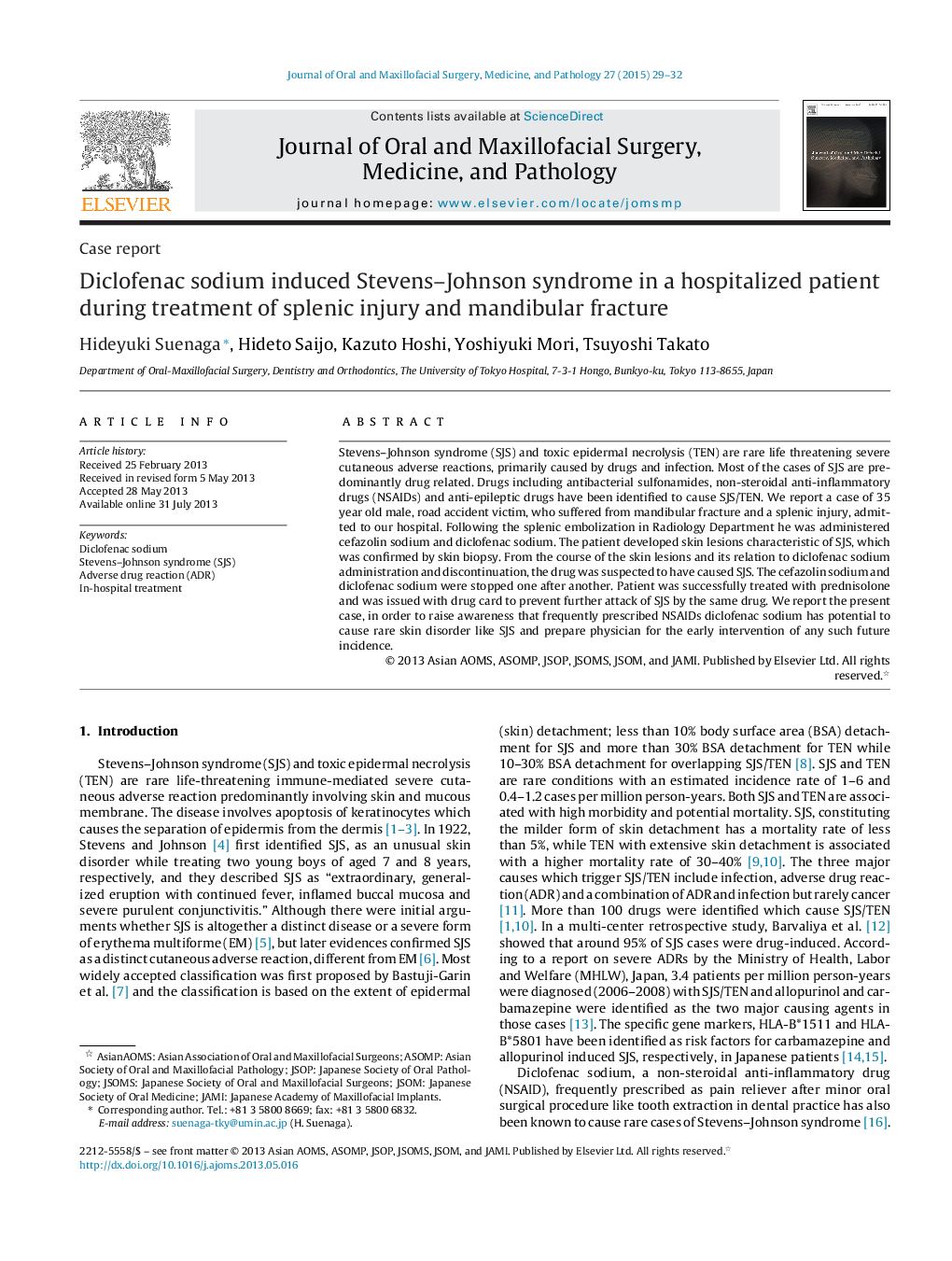| کد مقاله | کد نشریه | سال انتشار | مقاله انگلیسی | نسخه تمام متن |
|---|---|---|---|---|
| 3159805 | 1198360 | 2015 | 4 صفحه PDF | دانلود رایگان |
Stevens–Johnson syndrome (SJS) and toxic epidermal necrolysis (TEN) are rare life threatening severe cutaneous adverse reactions, primarily caused by drugs and infection. Most of the cases of SJS are predominantly drug related. Drugs including antibacterial sulfonamides, non-steroidal anti-inflammatory drugs (NSAIDs) and anti-epileptic drugs have been identified to cause SJS/TEN. We report a case of 35 year old male, road accident victim, who suffered from mandibular fracture and a splenic injury, admitted to our hospital. Following the splenic embolization in Radiology Department he was administered cefazolin sodium and diclofenac sodium. The patient developed skin lesions characteristic of SJS, which was confirmed by skin biopsy. From the course of the skin lesions and its relation to diclofenac sodium administration and discontinuation, the drug was suspected to have caused SJS. The cefazolin sodium and diclofenac sodium were stopped one after another. Patient was successfully treated with prednisolone and was issued with drug card to prevent further attack of SJS by the same drug. We report the present case, in order to raise awareness that frequently prescribed NSAIDs diclofenac sodium has potential to cause rare skin disorder like SJS and prepare physician for the early intervention of any such future incidence.
Journal: Journal of Oral and Maxillofacial Surgery, Medicine, and Pathology - Volume 27, Issue 1, January 2015, Pages 29–32
